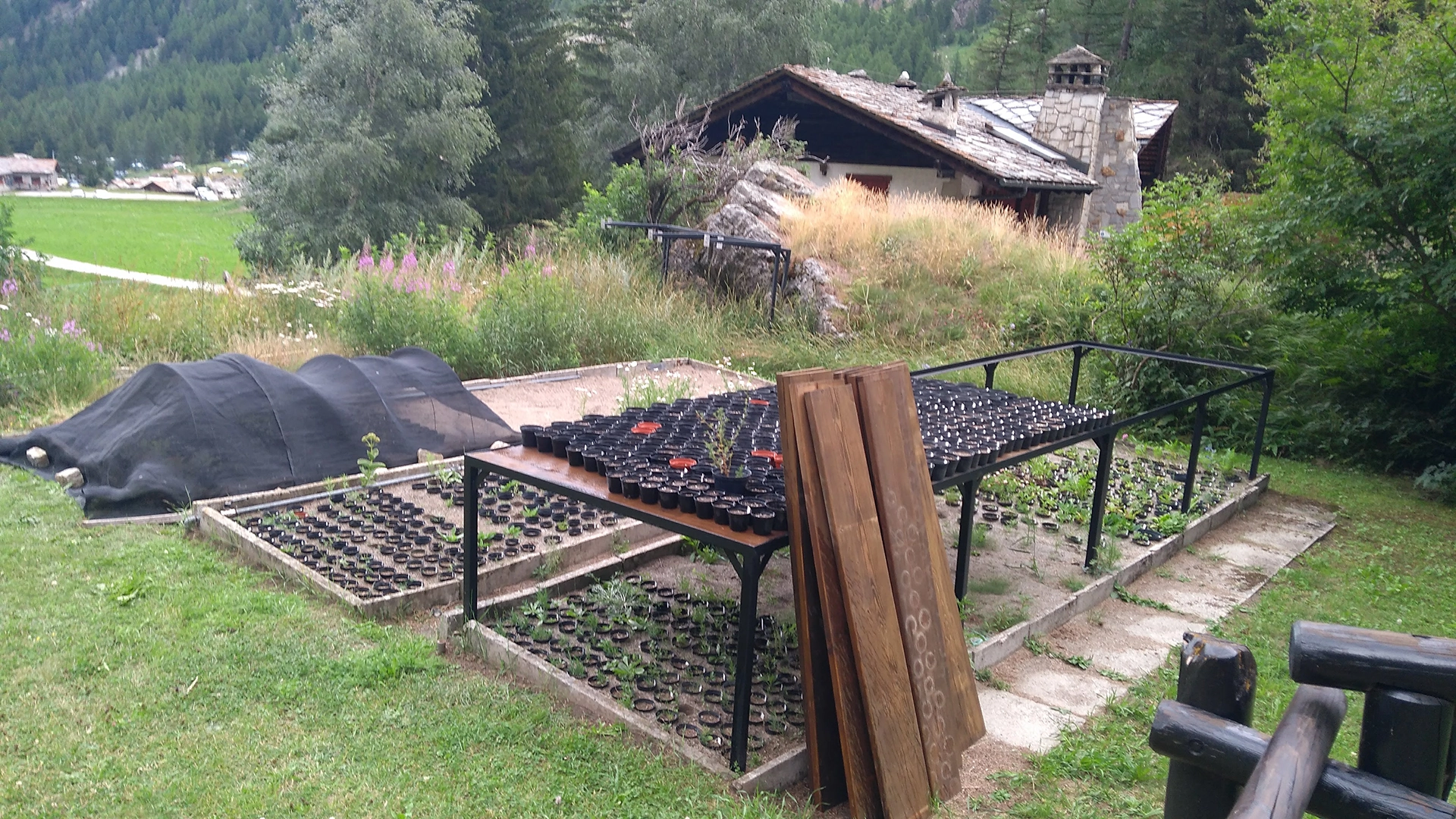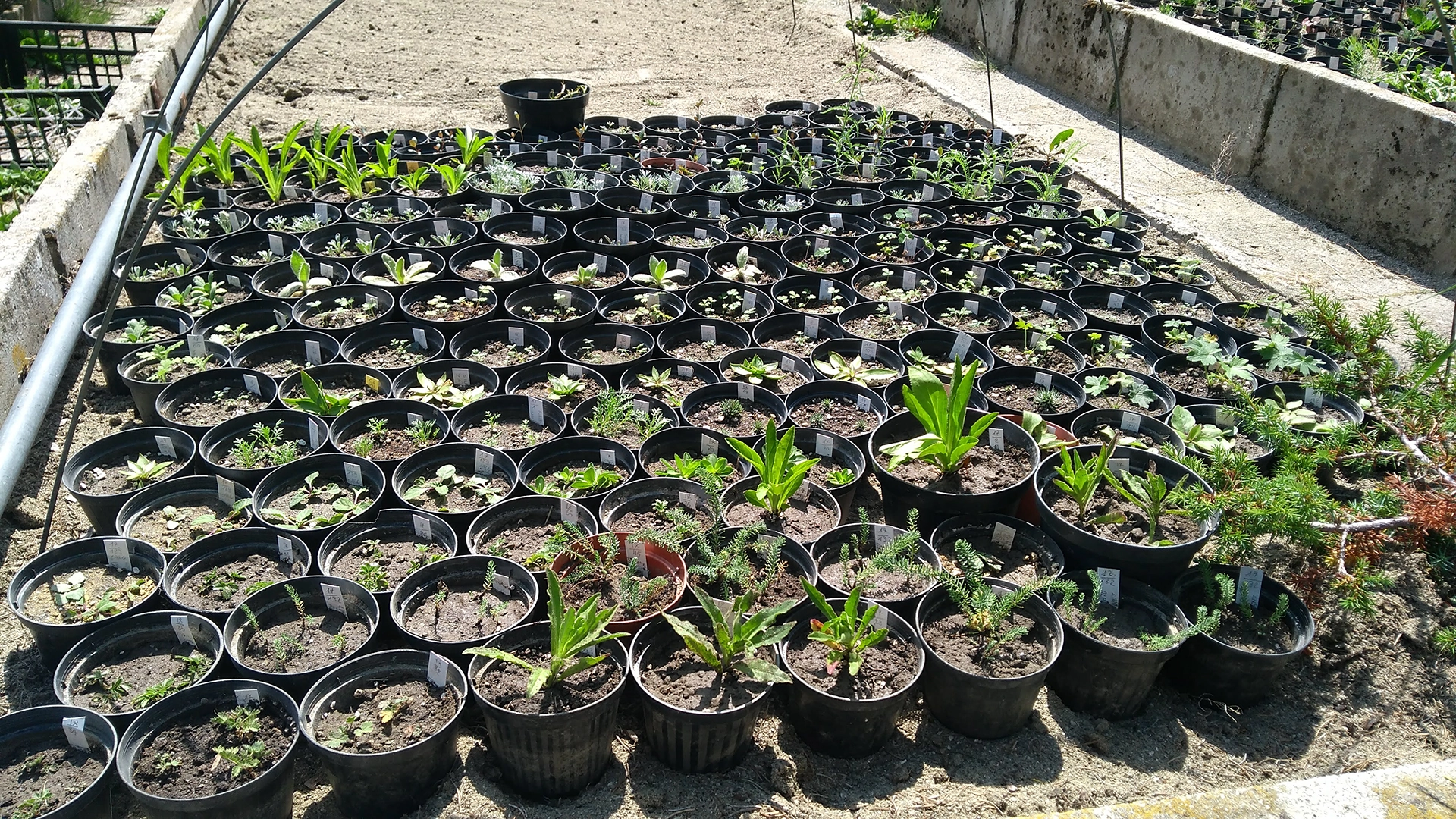The nursery
 See on the map
See on the map
The nursery plays a fundamental role in enriching and maintaining the botanical collections of a botanical garden. In fact, the plants hosted at Paradisia are obtained exclusively from seeds collected in the wild or from other countries through international exchange: every spring, the staff sow the species to be introduced or increased and periodically transplant those that have germinated. When the plants reach the right development, they are planted out in the rocks.
Sometimes, and only for the most common species, already developed individual plants are collected in the wild; in this case too, it is the nursery that guarantees the right period of acclimatization before transplanting them in the garden.
Seeds and young seedlings are placed in small vases in sand; this ensures the right degree of humidity during summer and protection from frost in winter.
Contrary to what might be expected, Alpine botanical gardens are only rarely irrigated and natural soil rich in stony material is used, avoiding the use of topsoil and fertilizers. This is because species that live at altitude prefer soils that are very poor in nutrients and water, but rich in skeleton.
Paradisia hosts species from the mountain environments of other countries, even some that very far away ones. The seeds, collected both in the wild and in other gardens, are obtained through international exchange, which is only possible for educational-scientific purposes.
Every year, Paradisia also publishes its own catalogue, Index Seminum, which it exchanges with over 300 accredited gardens and botanical gardens worldwide. These operations are regulated by precise rules, aimed at avoiding the spread of potentially invasive species.





